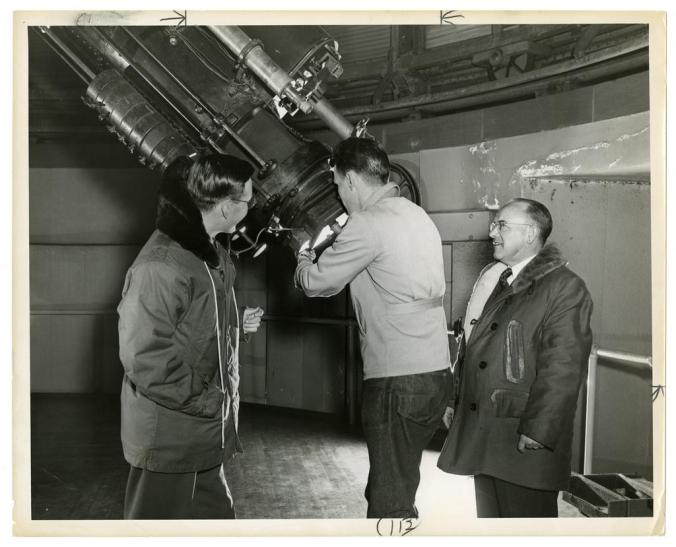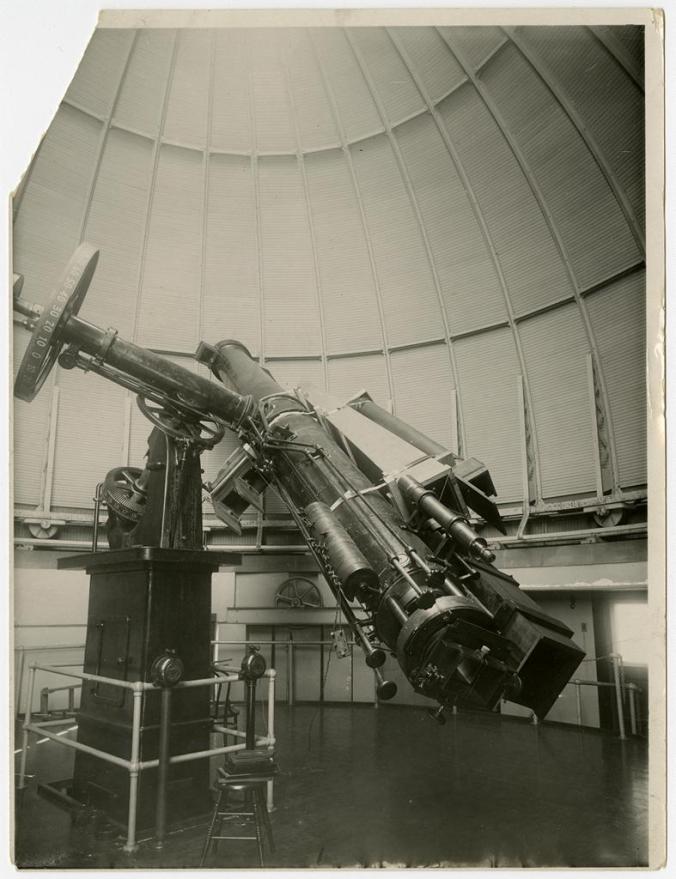By far and away, the oldest astronomical instrument is the human eye. And while astronomy remains a highly visual science, the way in which astronomical imaging occurs has changed a great deal over the centuries.
Near the end of his life, Galileo Galilei famously became blind. According to mythology, this was a result of observations he had made on the Sun (although this appears to be largely unsubstantiated). Regardless of the cause, his observations certainly affected his ability to do work, considering he observed by drawing what he saw through his telescope.

Carl Stearns (right); Robert T. Matthews, astronomy instructor; and a student working with the 20-inch in 1951. Image courtesy of Special Collections and Archives, Wesleyan University.
The advent of photography transformed astronomy in the late 19th century, allowing observers of the heavens to capture what the telescope saw automatically. Vision was clearly still important, but the kind of acuity that would have been necessary in Galileo’s day was less crucial. For instance, C. L. Stearns, one of Wesleyan’s professors of Astronomy in the early 20th century, was both nearsighted and colorblind. Indeed, his vision was poor enough that he was exempted from the draft during the First World War because of his eyesight. Yet his vision problems did not significantly hamper his ability to do astronomy, as is evident by his important work on stellar parallax.
Stearns observed in an era during which observations were recorded on photographic plates, taken from cameras that were attached to telescopes. It was the observer’s job to find the right stars and to focus the telescope, but he was not required to describe the objects in the field of view. As a result, good eyesight and the ability to distinguish between different colors was not as necessary in the 1920s as it was in Galileo’s time.

The 20-inch telescope with cameras and lenses attached. Set up for the January 24 total solar eclipse, 1925. Image courtesy of Special Collections and Archives, Wesleyan University.